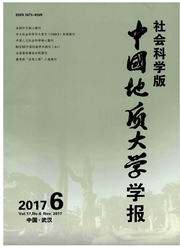

 中文摘要:
中文摘要:
鉴于我国的城乡二元结构,本文使用泰尔指数度量和刻画我国的城乡收入差距及其变化特征。同时,本文设定了非线性阈值协整模型,以揭示我国改革开放以来城乡收入差距与实际经济增长的长期非线性关系。结果表明,长期非线性闽值关系在泰尔指数为0.100(阈值)处发生机制转移:1978—1991年,我国城乡收入差距对实际增长的长期效应为正;1992—1999年,收入差距对实际增长的效应由正向负平滑转换;1999年后,我国城乡收入差距对实际经济增长产生阻滞作用,且负效应呈逐年增加趋势。
 英文摘要:
英文摘要:
Given China's dual urban-rural structure, this paper employs the Theil index for measuring and depicting China's urban-rural income disparity and its characteristics. Furthermore, this paper specifies a nonlinear threshold cointegration model to reveals a nonlinear relationship between the urban-rural income gap and real economic growth over a long period since reform and opening up in China. Our results show that the regime switch of the long-term nonlinear threshold relationship takes place at the 0.100 (threshold value) of the Theil index. From 1978 to 1991, the long-term effect of the urban- rural income disparity on China's economic growth was positive; between 1992 and 1999, there was a smooth transition to a negative effect; and from 1999 on, the negative effect has been increasing year by year. Income disparity now has the effect of retarding China's real economic growth.
 同期刊论文项目
同期刊论文项目
 同项目期刊论文
同项目期刊论文
 期刊信息
期刊信息
